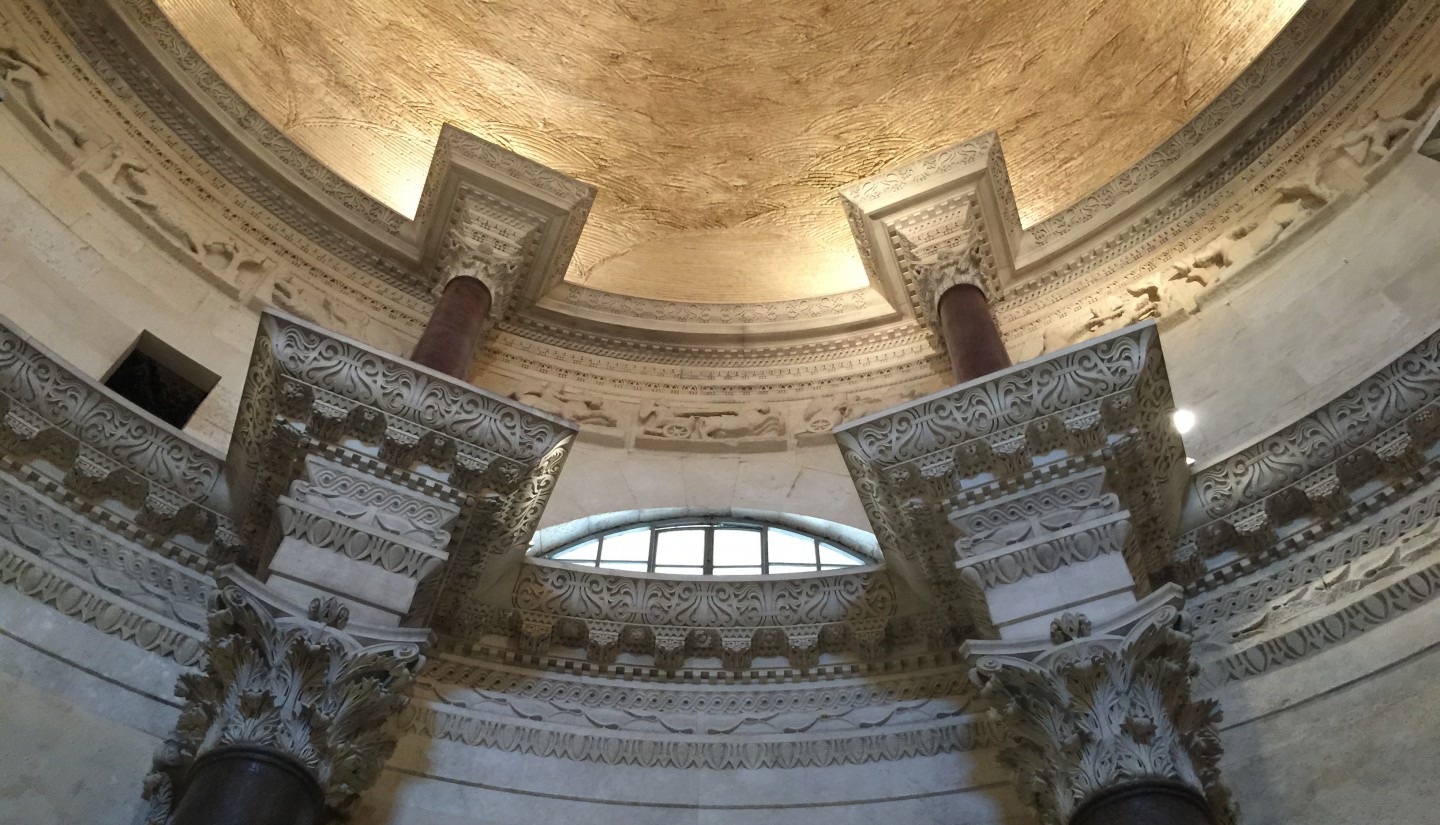Overall Impact: ***** 5 stars – This is the best theatrical treatment of a Roman site we have seen. Using sound and light Bloomberg takes you as observers of a Mithraic ceremony from the C4th. What survives are basically the foundations of the walls – but you feel there is far more.
Access **** 4 stars – The site is in the new Bloomberg Building in the City of London with a reception area, art exhibition and wall-mounted funds display at street level. In the first basement is a waiting area with narrated commentary, and one level below that the actual Mithraic chamber. All floors are fully accessible by lift and step-free.
Atmosphere ***** 5 stars – With light effects creating the missing columns and walls, and the ancient invocation to Mithras in Latin coming though the sound-speakers, the impression of being at a Mithraic ceremony is wonderfully created.
Other **** 4 stars – This site really has a wow factor that other Roman sites in the UK don’t have. No wonder it’s a favourite with school groups (and public visits must be pre-booked in the summer).

The Mithraeum was found in September 1954 during post-War bomb-site clearance around the course of the Walbrook River in the City of London. The site was originally on the east bank of the Walbrook. It was a major sensation when it was found with over 300,000 members of the public queueing up to visit the site. Amazingly high-quality statues of Mithras, Serapis and the bull sacrifice were found on the site, apparently buried in the 350s AD when the temple was given a new dedication to Bacchus.

By public demand, and after Questions in the House of Commons, the temple remains – which consisted of low-level walls – were transported some 100m away from their original location to an open-air site on Queen Victoria Street. The re-construction then was of the most basic kind, losing detail and plaster work, and was criticised at the time. The site remained there in wind and rain, a shadow of its former self, but remembered fondly by Londoners for its fame on discovery.

In 2007 plans were formulated for the return of the Mithraeum to its original site. Given the pace of decay and renewal in the City of London, the post-war Bucklersbury House was due to be demolished and replaced by the new Bloomberg Headquarters. A full re-excavation of the Walbrook site was therefore undertaken. The waterlogged setting produced a wonderful variety of finds including organic remains and writing tablets with stylus impressions that have enabled messages to be reconstructed.
Bloomberg paid for the excavation and for the foundations of the Mithraeum to be moved back and this time properly re-constructed in their basement using the excavation reports and photographs from the 1950s as evidence. Plaster work was replicated and the physical remains returned to as near as possible their state when they appeared in the bottom of the bomb site. (Because there were some remains still in situ on the site, in order to protect these, the reconstruction still isn’t quite in the original spot!)

Bloomberg then invested in a visitor experience with an art gallery at the entrance with a beautifully-designed wall display of the best finds from the Walbrook. These are carefully conserved and very well lit. And, for once, the iPad interactive catalogue is easy to use and adds real value to one’s understanding of the artefacts.
One floor down, there is a waiting area with audio-visual displays on the Cult of Mithras, from which the visitors are conducted down to a lower level where the Mithraeum is only dimly visible in the murk. There is then a 4-and-a-half minute son et lumière display that recreates the sounds of a Mithraic Ceremony followed by a ritual feast (surprisingly thought to have been of chicken, not beef). The Latin words you hear are actually taken from the walls of a Mithraeum found in Rome. This frankly could have been tacky if poorly done – but in fact we found it to be both atmospheric and mesmeric.

All of this is well carried out, supported by enthusiastic and well briefed staff who are keen to answer questions and show you photographs of the original 1950s dig.
All in all, a really great experience for Roman enthusiasts, tourists and school parties!

